Cheltenham Mechanics' Institute Free Library and Temperance Hall
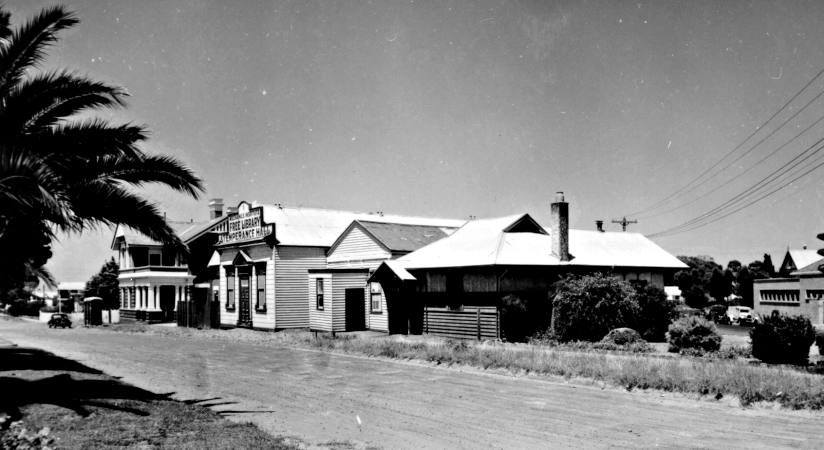
Mechanics’ Institute, Free Library and Temperance Hall with Billiard Room, 1960. Courtesy Kingston Collection.
The Cheltenham Mechanics’ Hall was the centre of the community’s social life for almost one hundred years. It was there that residents of the district came to borrow library books, to listen to aspiring State and local level politicians describing what they hoped to achieve if elected, to consider the contents of lectures delivered by visiting and local speakers, to welcome home soldiers returning for world conflicts, to dance until the early hours of the morning, to play billiards, and to be entertained by the antics of comedians and the singing of local and visiting artists. There was more because it was there that local churches held meetings, local clubs held annual meetings, and the Court of Petty Sessions convened until a separate court house was built.
The Mechanics movement started in Glasgow in the late eighteenth century, promoted by George Birkbeck, Professor of Philosophy and Chemistry at a Glasgow University. His idea was ‘to give the ordinary working man a little pleasure to occupy his mental vacancy in the evenings’ [1] The first venture he conducted was a course called ‘The Mechanical Properties of Solid and Fluid Bodies’ which lasted three months in 1799. On the first night his audience numbered seventy five but by the fourth meeting it had grown to five hundred. It was Birkbeck’s work that inspired the founding of the Edinburgh School of Arts in 1821 and the London Mechanic’s Institute in 1823.
The Institute movement came to Melbourne in 1839, just four years after the commencement of European settlement, with the establishment of the Melbourne Mechanics’ Institute later known as the Melbourne Athenaeum. Adopting the principles of self help, social improvement and the recognition of the importance of useful knowledge, it maintained a library, a reading room and an art gallery, while also establishing classes and lectures in a variety of fields. The formation of institutes at Geelong and Portland quickly followed that of Melbourne. [2] Cheltenham was only a decade or two behind these leaders.
Various dates have been suggested for the founding of the Cheltenham Mechanics’ Institute. Wesson, after researching Institutes in Victoria, gave the year 1855 with the possibility of 1853, thus placing it in a group which included Prahran 1854, Bendigo 1854, Kerang 1854, Kyneton 1854 and Castlemaine 1855. [3] Sheehy gives the year as 1856. [4] These dates, seem early given the size of the Cheltenham community at that time. Nevertheless, even in small towns with strong-willed members determined to move the community forward, it was possible to establish an institute.
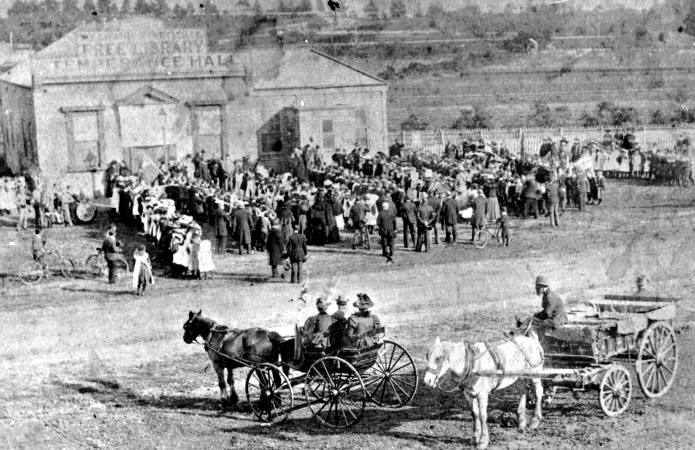
Gathering of people and students from local schools outside the Mechanics’ Hall, on the occasion of Queen Victoria’s Diamond Jubilee, 1897. Photographer: Percy Fairlam, Courtesy Betty Kuc.
The 1864 Victorian Gazetteer indicates about 250 persons lived at Cheltenham, a town which had a Masonic Institute, a Post and Money Order Office, and two hotels. In the previous year, in May, a site for a Mechanics’ Institute was temporarily reserved by government. [5] By 1865 the Institute was operating. Records of the Cheltenham-Beaumaris Young Men’s Improvement Society show that they met there that year. [6] In February 1865 John Matthew Smith offered to pay for the use of the Mechanics’ Institute by the Church of England for Divine Services and in September that same year Mary McKnight recorded in her diary that her husband, James McKnight, attended the first court of Petty Sessions in the Mechanic’s Institute hall. [7] [8]
In a notice announcing his death, James McKnight, was acknowledged as one of the founders of the Cheltenham Mechanics’ Institute but his colleagues in this venture were not named. [9] Wesson in his review of Mechanics’ Institutes throughout Victoria suggested that non conformist ministers of religion, doctors, solicitors, bankers and merchants typically were the community members active in the formation and support of institutes. This was not the case at Cheltenham. McKnight was initially engaged in agricultural pursuits. He cleared the land, grew crops, established an orchard, milked cows and raised poultry. In February 1865 James McKnight was appointed by the government as a trustee of the site on which the institute was built. The other people named in the Government Gazette as trustees were William Ruse, Henry Wells, Norman McSwain and Jonathon Stanway Parker. [10] It is likely that these same individuals were, together with McKnight, the founders of the institute. All were land owners. William Ruse was a market gardener and fruit grower owning land on the Beaumaris Estate, today bounded by Patty, Bourke, and LaTrobe streets and Charman Road. [11] Henry Wells acquired a crown land grant of 37 acres in 1853 and it was on this property he built his house, ‘Harrow Hill’. The property was bound by what today are Balcombe, Beach, Wells and Charman roads. Norman McSwain had land in Warren Road, Mordialloc, while Parker, listed on the Victorian Electoral Roll for 1856 as a yeoman (farmer), held extensive land holdings in the Parishes of Moorabbin and Mordialloc and built ‘Mayfield’ on 314 acres of land where for a time he resided. (moved from Mordialloc 1873) [12] All were married men with families and often active in church and council affairs while working to survive by clearing the land and growing crops or grazing cattle.
The first Institute building erected on the tip of the land where Charman Road joined Point Nepean Road was of weatherboard construction, probably in a style Wesson called ‘Chapel Cheapies’; a minimum priced box with a gable roof. [13] It consisted of a small hall, a reading room and a library. As Everest Le Page wrote, ‘a construction sufficient to serve as a meeting room for many friendly societies and temperance organisations in Cheltenham, as well as a place of entertainment.’ [14] Later it was realized that the building was inadequate for community functions that attracted a large number of participants; consequently additions and modifications were needed. The Shire Council in 1888 voted £10 to the building fund but stipulated that the money would only be paid when the new building was commenced. [15] Major contributors to the fund were the temperance societies who were regular users of the Institute’s facilities. As a result of their contributions the building was named Mechanics’ Institute Free Library and Temperance Hall with this title being proudly painted on its façade in ‘gold letters shaded with blue’. [16] The newly erected hall was described in the local newspaper as being ‘64 feet long by 30 feet wide and 21 feet in height with a platform at one end. The walls were boarded four feet high with a handsome cornice running around the ceiling. Its acoustic properties were universally praised as being excellent and it was noted that ample provision was afforded for egress in case of a rush.’ It was in this hall that the Australian Natives Association drew large crowds to musical and elocution competitions held three nights a week over several months. [17]
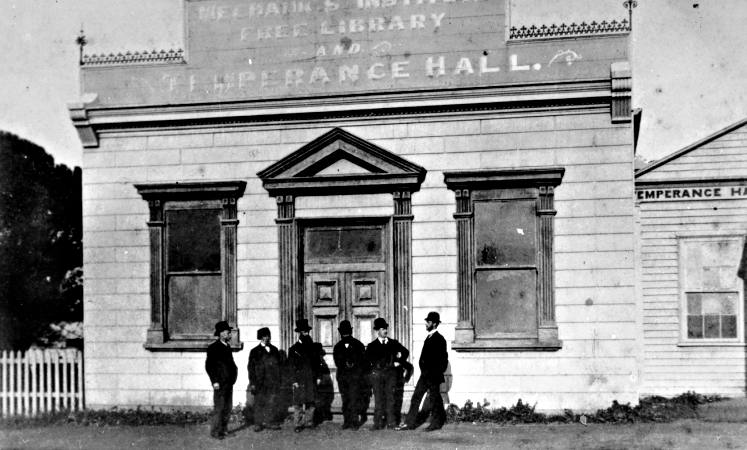
Mechanics’ Institute and Temperance Hall, c1910. Photographer Percy Fairlam. Courtesy Betty Kuc.
Towards the end of the nineteenth century a house was purchased and placed next to the hall to provide a home for a resident caretaker. [18] In 1905, a few years after the completion of the building, the Australian Natives Association approached the Mechanics’ Institutes’ Committee with the request that it do something to entertain the young men of the town and keep them out of trouble. From this request came the idea of building a billiard room. Thomas Bent, a local councillor as well as Premier of the State, was approached for financial assistance and after some discussion a government grant of £200 was received. [19] This grant, together with the issuing of debentures, allowed the billiard room to be added to the Institute’s facilities. In 1912 the trustees realized that the buildings were in need of refurbishment and spent £600, which included a bank loan of £200, to completely renovate the hall, and purchase new chairs. The trustees won high praise for their actions. [20].
Along with the successes the trustees and committee had to grapple with many problems. The fluctuation in income was an ongoing concern. For several years the receipts did not match expenditure so attempts were made to increase the number of subscribers. There was also a move to increase the usage of their halls to generate additional income from hire fees. It was thought the Soldiers’ Hall was turning away applicants who could be referred to the Institute. [21] Almost a year later a man, in 1923, passing the Institute noticed flames coming from the building. He gave the alarm immediately but by the time the brigade had arrived the fire had a strong hold. It took almost one hour before the fire was brought under control. This was the third time in eight weeks that a fire had broken out in the Institute. On the latest occasion considerable damage was done to the library and the rear portion of the building but fortunately the Institute had the contents of the building insured with Yorkshire Insurance Co for £400 and the building with Norwich Union Insurance Co for £900. The cause of the fires was not revealed. [22] For the ongoing welfare of the Institute a more serious problem occurred in 1929 when the trustees indicated they had had enough and threatened to resign and hand the property over to the government. For a few years there was not a functioning committee to support either themselves or the services provided by the Institute. The local newspaper carried the headline, ‘Wake Up Cheltenham!’ the ‘Mechanics’ Institute and Library in Danger!’ Subscribers were urged to attend the annual meeting and prevent such a calamity. Public spirited citizens were called upon to form a strong and energetic committee to assist in managing the affairs of the institute. [23] Men did answer these calls and the Institute was saved.
Over its long history the halls of the Institute were used for a variety of public meetings. Temperance and Friendly Societies were regular users along with politicians, churches and sporting groups. One of the early meetings was called to discuss the question of railway extensions, and to voice the community’s view that a line through Brighton East (Bentleigh) was preferable to one to Oakleigh and Dandenong. [24] The railway was once again the concern of local citizens at a public meeting called twenty years later to campaign for the duplication of the railway line to Mordialloc, to increase the number of trains and improve the carriages used on the line. [25 ]A meeting chaired by the President of the Shire of Moorabbin, J A McCarthy, resolved that action should be taken to procure a courthouse, police quarters and a lock-up for Cheltenham and that a deputation should wait upon the government. [26] It was in the small hall that the first of a series of public meetings was held aimed at forming a Market Gardeners and Fruitgrowers’ Association. [27] Other associations which used Institute facilities over the years included the Poultry Association, Horticultural Society and the Indoor Bowls Association. It was a group of people meeting at the Institute who in 1938 resolved to launch an appeal for £500 towards the cost of building a community hospital. They realized that their proposed ten bed hospital would cost much more than this but it was a beginning. The plan was to raise the balance of the needed funds through the issuing of debentures to the value of £3000. [28]
Admission was free in 1891 when The Rev Bickford gave his popular lecture on the Life of Father Matthew although there was a collection to benefit the funds of the Institute. Other local clergy were often speakers at public meetings. In 1904 lectures on How we got Our Bible and The Origin of the Bible Society were presented. [29] Thirteen years earlier there was a concert in aid of a fund to help flood victims in Melbourne. [30] In addition to these public lectures local churches made use of the Institutes’ facilities for their bazaars, anniversary dinners, concerts and other money raising activities. Mrs Goe, the wife of the Bishop of Melbourne, opened a bazaar and fancy fair for St Matthew’s Cheltenham. The Church of Christ held their annual tea at the Institute, an occasion where they sang a special selection of hymns. The Presbyterians arranged a Grand Scotch Concert in aid of their Sabbath School. This concert featured the Albert Park Choir and Mr McCall a Scotch humorist. In 1890 Miss Kennedy advertised her ‘Select Private School’ conducted in the Mechanics’’ Institute. There instruction in all branches of English were presented as well as Arithmetic, Book-keeping, French, German, Italian, natural Philosophy and Botany. All were thoroughly taught according to the advertisement. In addition special attention was paid to each pupil’s conduct, deportment and needlework. [31]
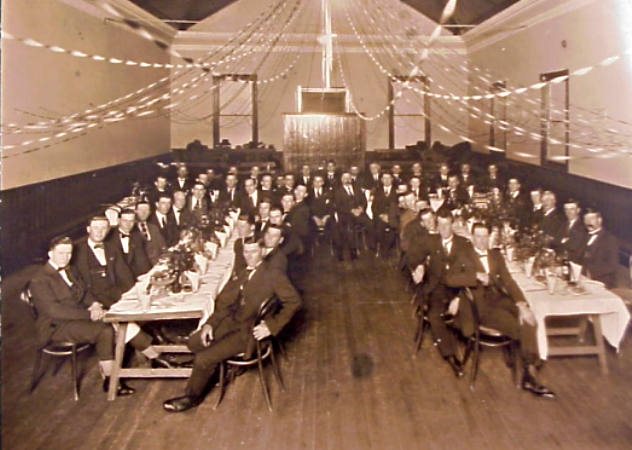
Men’s Dinner at the Mechanics’ Institute, Cheltenham. C1914. Photographer Percy Fairlam. Courtesy Betty Kuc.
Local clubs used the Institute as the venue for some of their major yearly social activities. The Cheltenham Football Club held their annual dance there in 1893. Thirty five couples attended. The dancing commenced punctually at 8 o’clock and concluded at 4 o’clock the next morning. It was said to be one of the most successful social events held in the district. [32] The Heatherton Cricket Club conducted their annual meeting and social there in the same year. [33] Dancing was obviously a popular pastime in 1893 because it was in that year that a petition was received by the Moorabbin Shire Council from twenty householder asking that the Mechanics’ Institute be registered as a Dancing Room. This was granted for three months for a fee of 15 shillings. [34] Each Thursday the Cheltenham Quadrille Assembly met at the Institute when admission was 1s 6d for men with the ladies being admitted free. [35] In 1900 the Heatherton Cricket Club was again using the Institute’s hall for its annual dance when admission was three shillings and six pence for men and one shilling for women. For this price refreshments were included and the dancing went from 8 o’clock until 5 o’clock in the morning. [36]
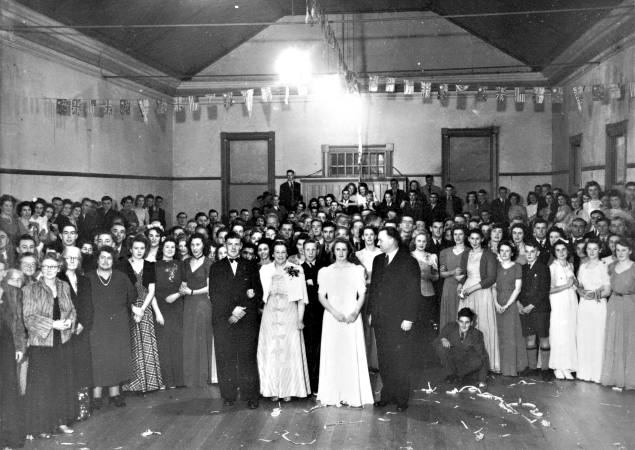
Dance in support of St Matthew’s Tennis Club in the Mechanics’’ Institute Hall, c1950. Courtesy City of Moorabbin Historical Society.
For some local people a valued service the Institute provided was the library. Fairlie Taylor, writing in 1977, acknowledged the Institute was the focal point for most of Cheltenham’s social activities and drew attention to the small library with its ‘dusty books’. [37] As might be expected, early in the days of the library the collection was not large. Initially people found themselves reading the same story over and over again and to borrow a book a subscriber had to replace it with another. In 1890 the committee decided that the library opening hours should be increased. [38] and ten years later the opening hours were fixed as four evenings in the week from 7 o’clock to 9 o’clock and on three afternoons from 2 o’clock to 4 o’clock. [39] At that time the library had over 100 subscribers with a book collection of upwards to 2000 volumes. [40] Besides the library book collection members could visit the reading room where local and interstate newspapers were available including the Leader, the Australasian, the Weekly Times and the Sydney Bulletin. [41]
In May 1900 the Mechanics’ Institute played a role in what Cr Everest Le Page described as the ‘greatest night that Cheltenham had ever known.’ It was a time when the colony of Victoria, and later the new nation of Australia sent troops to South Africa to fight the Boers. On this great night the Bushmen’s Contingent were riding from their camp at Langwarrin to their embarkation point at Port Melbourne. They broke their journey at Cheltenham being billeted in the hall of the Institute while their horses were left to graze in neighbouring paddocks. People flocked to Cheltenham to cheer the departing troops and while there six soldiers took the opportunity to marry in the home of the Institute’s caretaker. [42]
By the end of the 1950s the Institutes’ facilities were becoming shabby and dilapidated so the trustees and committee decided to demolish them and erect a modern structure more in keeping with contemporary needs. The trustees sought approval from the Lands department to surrender their title to the land, permanently given to the Institute in 1886, to the Moorabbin City Council. This approval was given. On 14 October 1958 a meeting of interested individuals formed the Cheltenham Mechanics’ Cooperative Society. The trustees of the Institute, W Rose, A Rose, Cr E A Le Page, (Chairman), C Wilkins and E Whitehead were appointed as the directors of the new society with George Sanders being elected Hon Secretary. With a guarantee of funding from the government, and a promise of up to £20,000 from the Moorabbin Council, planning for the new facility proceeded. Architectural drawings were prepared by Ian turner and Associates and a loan from the local savings bank enabled construction to start immediately the old structure was demolished. The Institute’s library books were donated to the Melbourne Home and Hospital for the Aged in Warrigal Road and to the Cheltenham Elderly Citizens’ Club. The billiard room, originally built with the assistance of Sir Thomas Bent, was moved to Highett to commence a new life as a hall for the scouts.
As chairman of the new Mechanics’ Cooperative Society, Cr E A Le Page, expressed the hope that the new hall rising in the place of the Mechanics’ Institute and Temperance Hall would prove as great a benefit and blessing to present and future generations as its predecessor had to past residents of Cheltenham. This was a wish supported by many in the community.
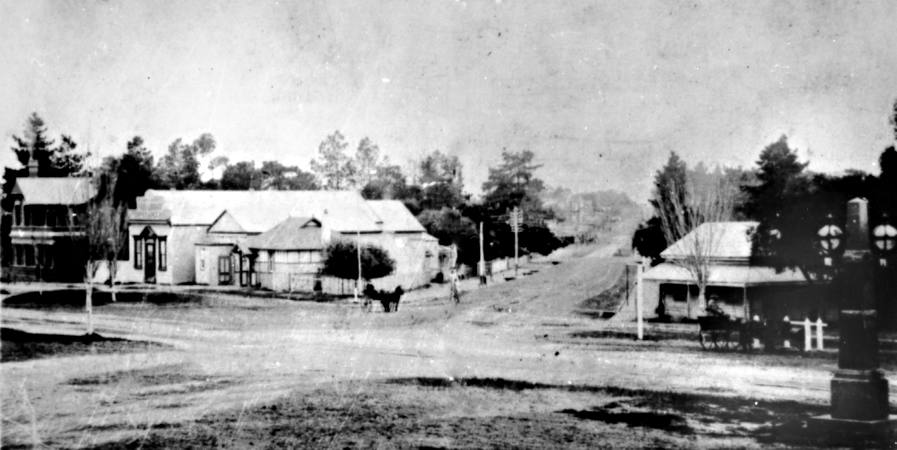
The intersection of Charman Road with Point Nepean Road, Cheltenham c1900. From the left the Post Office and Mechanics’ Institute halls and billiard room. To the right is the Boer War Memorial. Courtesy Eric Longmuir, Kingston Collection.
Footnotes
- Wesson A., Mechanic’s Institutes in Victoria, The Victorian Historical Magazine August 1971 page 608.
- Geelong 1841 and Portland 1843.
- Wesson A. op.cit page 613.
- Sheehy T., A Short History of Moorabbin, page 43.
- Victorian Gazette, 20 May 1864 page 1090.
- Blackman N, Book of Cuttings: Records of Moorabbin History, City of Moorabbin Historical Society.
- Minutes of Church of England, St Matthew’s, 1862-1875.
- McKnight M, Diary.
- The Argus, 9 August 1902.
- Government Gazette. 7 February 1865.
- Bronnie Treloar William Ruse: Pioneer of Cheltenham and Beaumaris, Article 244 Kingston Historical Website.
- Allan Willingham, Jonathan Stanway Parker: Mordialloc Pioneer 1826-1899, Article 295 Kingston Historical Website.
- Wesson, A., op.cit., page 614.
- Le Page, E., Moorabbin News, 1958.
- Shire of Moorabbin, Minute Book 6, 30 January 1888.
- The Leader 13, September 1888.
- Le Page, E., Moorabbin News, 1958.
- Le Page, E., op.cit.
- See, Whitehead, G., Larrikins and Hooligans at Cheltenham, Kingston Historical Website.
- Moorabbin News, 3 February 1912.
- Moorabbin News, 23 January 1922.
- The Argus, 22 January 1923 page 7.
- Moorabbin News, 19 January 1929.
- The Argus, 3 November 1866.
- The Argus, 2 May 1887.
- The Argus, 29 April 1872.
- Moorabbin News, 12 May 1900.
- The Argus, 8 July 1938.
- Moorabbin News, 3 December 1904.
- Moorabbin and Mentone Chronicle, 13 August 1891.
- Brighton Southern Cross, 1 February 1890.
- Moorabbin and Mentone Chronicle, 19 October 1893.
- Moorabbin and Mentone Chronicle, 8 June 1893.
- Shire of Moorabbin Minutes, Book 6, September 4, 1893.
- A Quadrille was a form of square dancing – Moorabbin and Mentone Chronicle, 17 January 1891.
- Moorabbin News, 30 June 1900.
- Taylor, F., Bid Time Return, Page 84.
- Moorabbin and Mentone Chronicle, 6 September 1890.
- Moorabbin News, 12 May 1900.
- Moorabbin News, 7 April 1900.
- Blackman, N., op.cit.
- Moorabbin News, 29 October 1958.
